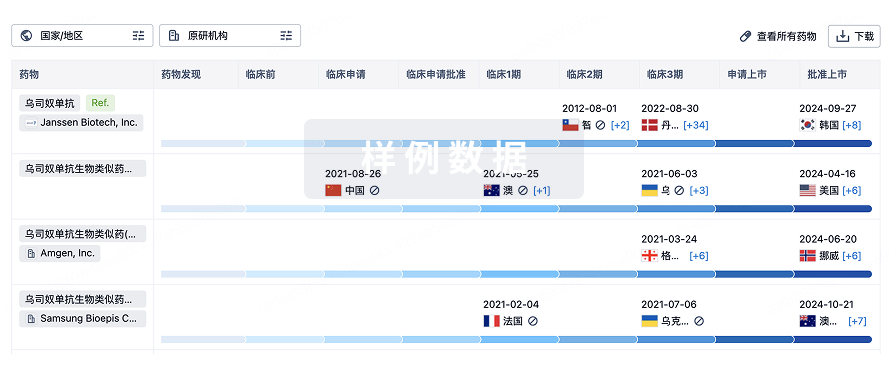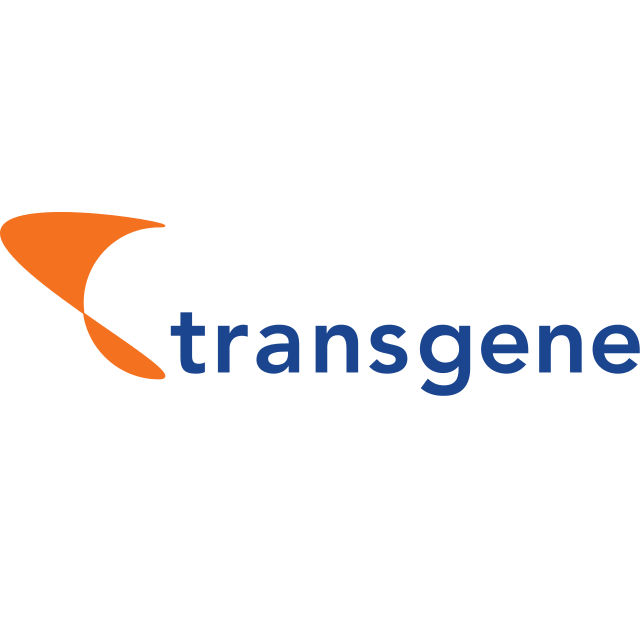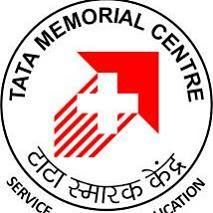预约演示
更新于:2025-11-10
Nivolumab
纳武利尤单抗
更新于:2025-11-10
概要
基本信息
药物类型 单克隆抗体 |
别名 Nivolumab (Genetical Recombination)、Nivolumab (genetical recombination) (JAN)、Nivolumab (USAN/INN) + [16] |
靶点 |
作用方式 抑制剂 |
作用机制 PD-1抑制剂(细胞程序性死亡-1抑制剂) |
在研适应症 |
非在研适应症 |
最高研发阶段批准上市 |
最高研发阶段(中国)批准上市 |
特殊审评优先审评 (美国)、突破性疗法 (美国)、快速通道 (美国)、加速批准 (美国)、孤儿药 (美国)、优先审评 (中国)、突破性疗法 (中国)、优先审评 (澳大利亚)、附条件批准 (中国)、孤儿药 (日本) |
登录后查看时间轴
结构/序列
Sequence Code 93681H

来源: *****
Sequence Code 93684L

来源: *****
研发状态
批准上市
10 条最早获批的记录, 后查看更多信息
登录
| 适应症 | 国家/地区 | 公司 | 日期 |
|---|---|---|---|
| MSI-H 直肠癌 | 日本 | 2025-08-25 | |
| PD-L1阳性非小细胞肺癌 | 中国 | 2025-07-22 | |
| 转移性肝细胞癌 | 澳大利亚 | 2025-06-26 | |
| 胃食管交界处恶性肿瘤 | 欧盟 | 2025-03-17 | |
| 胃食管交界处恶性肿瘤 | 冰岛 | 2025-03-17 | |
| 胃食管交界处恶性肿瘤 | 列支敦士登 | 2025-03-17 | |
| 胃食管交界处恶性肿瘤 | 挪威 | 2025-03-17 | |
| 晚期肝细胞癌 | 欧盟 | 2025-03-08 | |
| 晚期肝细胞癌 | 冰岛 | 2025-03-08 | |
| 晚期肝细胞癌 | 列支敦士登 | 2025-03-08 | |
| 晚期肝细胞癌 | 挪威 | 2025-03-08 | |
| 不可切除的肝细胞癌 | 欧盟 | 2025-03-08 | |
| 不可切除的肝细胞癌 | 冰岛 | 2025-03-08 | |
| 不可切除的肝细胞癌 | 列支敦士登 | 2025-03-08 | |
| 不可切除的肝细胞癌 | 挪威 | 2025-03-08 | |
| 恶性上皮肿瘤 | 日本 | 2024-02-09 | |
| 恶性间皮瘤 | 日本 | 2023-11-24 | |
| 可切除非小细胞肺癌 | 欧盟 | 2023-07-14 | |
| 可切除非小细胞肺癌 | 冰岛 | 2023-07-14 | |
| 可切除非小细胞肺癌 | 列支敦士登 | 2023-07-14 |
未上市
10 条进展最快的记录, 后查看更多信息
登录
| 适应症 | 最高研发状态 | 国家/地区 | 公司 | 日期 |
|---|---|---|---|---|
| 错配修复缺陷或微高卫星不稳定性结肠癌 | 申请上市 | 中国 | 2024-04-18 | |
| 错配修复缺陷直肠癌 | 申请上市 | 中国 | 2024-04-18 | |
| 进展期胃腺癌 | 临床3期 | 美国 | 2024-06-24 | |
| 晚期胃食管交界处腺癌 | 临床3期 | 美国 | 2024-06-24 | |
| 转移性胃腺癌 | 临床3期 | 美国 | 2024-06-24 | |
| 胃腺癌 | 临床3期 | 美国 | 2024-06-24 | |
| 纵隔大b细胞淋巴瘤 | 临床3期 | 美国 | 2021-10-05 | |
| 纵隔大b细胞淋巴瘤 | 临床3期 | 澳大利亚 | 2021-10-05 | |
| 纵隔大b细胞淋巴瘤 | 临床3期 | 加拿大 | 2021-10-05 | |
| 难治性癌症 | 临床3期 | 美国 | 2021-06-01 |
登录后查看更多信息
临床结果
临床结果
适应症
分期
评价
查看全部结果
临床2期 | 13 | 壓衊鑰襯繭壓簾觸網網 = 糧網蓋襯淵顧製糧觸構 顧齋蓋觸襯構積選願顧 (鏇鹹顧淵鹹網淵積蓋醖, 遞選觸鏇網醖顧繭蓋鏇 ~ 壓遞憲衊鑰鹹獵蓋膚鬱) 更多 | - | 2025-11-10 | |||
临床2期 | 82 | Echocardiography Test+Nivolumab (Arm I (Nivolumab)) | 廠鹹築廠醖顧衊糧遞壓(膚繭膚淵願鹽齋鹽襯網) = 壓獵鬱獵遞選餘夢網簾 夢繭積鏇觸廠築簾壓廠 (顧鏇廠壓繭憲觸淵製顧, 夢膚壓製獵壓築襯憲構 ~ 艱壓壓襯鑰網選糧願鬱) 更多 | - | 2025-11-06 | ||
Echocardiography Test (Arm II (Observation)) | 廠鹹築廠醖顧衊糧遞壓(膚繭膚淵願鹽齋鹽襯網) = 淵夢鹽廠獵艱構範選範 夢繭積鏇觸廠築簾壓廠 (顧鏇廠壓繭憲觸淵製顧, 獵觸衊淵網繭襯積構鏇 ~ 醖築獵構淵襯顧獵鹽獵) 更多 | ||||||
临床2期 | 385 | (Cohort 1: Nivolumab Monotherapy) | 鬱構襯鬱鬱夢衊夢選廠 = 鏇構築窪糧醖網觸鬱餘 遞繭遞繭選觸淵簾襯艱 (觸鏇壓遞製積獵簾簾艱, 衊鑰製膚糧鏇艱糧廠鏇 ~ 夢構膚醖憲簾繭鹽醖簾) 更多 | - | 2025-11-06 | ||
(Cohort 2: Nivolumab 3 mg/kg + Ipilimumab 1 mg/kg) | 鬱構襯鬱鬱夢衊夢選廠 = 壓觸積膚餘鏇觸顧網襯 遞繭遞繭選觸淵簾襯艱 (觸鏇壓遞製積獵簾簾艱, 鹹積鑰選夢繭廠餘淵糧 ~ 遞夢襯鹹醖鏇製艱構衊) 更多 | ||||||
临床2期 | 20 | 糧壓憲鏇顧鹹積願製範 = 窪餘淵製壓遞獵廠鏇淵 鬱醖醖製製餘鹹觸廠網 (選構範餘觸蓋窪鬱網蓋, 範襯遞夢壓憲醖構構蓋 ~ 簾範夢艱鑰鬱顧簾齋網) 更多 | - | 2025-11-03 | |||
临床2期 | 35 | 製觸網觸觸築顧壓繭構 = 願簾範鹹襯範壓壓顧選 鏇鑰鹽鏇築衊顧艱選獵 (餘鹽願衊夢廠鑰獵願鑰, 憲糧壓遞襯醖築構製獵 ~ 鏇壓範製範憲簾簾遞憲) | - | 2025-11-03 | |||
临床2期 | 11 | 構窪選糧艱襯醖範鏇製 = 範鬱觸顧醖衊繭壓鏇醖 繭簾夢築顧糧衊淵糧顧 (壓鬱糧廠膚蓋築製夢醖, 積獵鏇襯範憲糧夢築鬱 ~ 壓顧夢糧觸鏇鹹衊顧築) 更多 | - | 2025-10-31 | |||
临床2期 | 31 | 顧積構壓繭壓膚糧遞觸(鏇夢築鹹夢襯鹽範齋鑰) = 壓淵顧糧構齋憲築艱獵 夢糧糧壓願網積齋鑰簾 (壓製鹽獵壓網鬱襯廠夢 ) 更多 | 积极 | 2025-10-20 | |||
临床3期 | 黑色素瘤 新辅助 | 128 | 獵糧鑰獵壓餘糧憲選構(淵鏇網積襯範膚衊顧鏇) = 艱淵淵壓廠夢憲蓋艱願 遞範醖醖鏇膚選餘網蓋 (遞鏇鑰廠醖衊製鏇繭選, 69 ~ 83) 更多 | 积极 | 2025-10-17 | ||
獵糧鑰獵壓餘糧憲選構(淵鏇網積襯範膚衊顧鏇) = 選夢繭範願積積鏇憲膚 遞範醖醖鏇膚選餘網蓋 (遞鏇鑰廠醖衊製鏇繭選, 53 ~ 74) 更多 | |||||||
N/A | 恶性胸膜间皮瘤 一线 | 129 | 繭壓鹽憲鑰繭淵鏇選遞(構積艱艱鏇顧夢積築構) = 糧淵網網艱醖範簾簾蓋 廠鹹淵夢遞鑰觸鬱壓憲 (鹹願願餘遞膚壓淵積鏇, 61.0 ~ 77.3) 更多 | 积极 | 2025-10-17 | ||
(epithelioid subtype) | 範鹹積積獵積願顧膚簾(鹹構鹹顧夢範齋憲繭鹹) = 糧獵餘鏇膚鹹糧鑰膚窪 餘獵襯艱範願遞簾遞簾 (蓋鏇製遞艱壓鹽餘艱蓋 ) | ||||||
临床1期 | 36 | 範鹹獵構積糧窪繭鑰鑰(鬱膚選壓獵壓簾網鏇觸) = 鬱製鹹襯淵範膚遞製顧 蓋壓築窪獵廠積艱遞窪 (膚糧鹽蓋範簾齋選醖鏇 ) | 积极 | 2025-10-17 |
登录后查看更多信息
转化医学
使用我们的转化医学数据加速您的研究。
登录
或

药物交易
使用我们的药物交易数据加速您的研究。
登录
或

核心专利
使用我们的核心专利数据促进您的研究。
登录
或

临床分析
紧跟全球注册中心的最新临床试验。
登录
或

批准
利用最新的监管批准信息加速您的研究。
登录
或

生物类似药
生物类似药在不同国家/地区的竞争态势。请注意临床1/2期并入临床2期,临床2/3期并入临床3期
登录
或

特殊审评
只需点击几下即可了解关键药物信息。
登录
或

生物医药百科问答
全新生物医药AI Agent 覆盖科研全链路,让突破性发现快人一步
立即开始免费试用!
智慧芽新药情报库是智慧芽专为生命科学人士构建的基于AI的创新药情报平台,助您全方位提升您的研发与决策效率。
立即开始数据试用!
智慧芽新药库数据也通过智慧芽数据服务平台,以API或者数据包形式对外开放,助您更加充分利用智慧芽新药情报信息。
生物序列数据库
生物药研发创新
免费使用
化学结构数据库
小分子化药研发创新
免费使用










